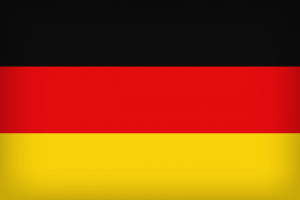Language/German/Grammar/Comparative-and-Superlative-Forms
 Հայերէն
Հայերէն Български език
Български език 官话
官话 官話
官話 Hrvatski jezik
Hrvatski jezik Český jazyk
Český jazyk Nederlands
Nederlands English
English Suomen kieli
Suomen kieli Français
Français עברית
עברית हिन्दी
हिन्दी Magyar
Magyar Bahasa Indonesia
Bahasa Indonesia فارسی
فارسی Italiano
Italiano 日本語
日本語 Қазақ тілі
Қазақ тілі 한국어
한국어 Lietuvių kalba
Lietuvių kalba Νέα Ελληνικά
Νέα Ελληνικά Şimali Azərbaycanlılar
Şimali Azərbaycanlılar Język polski
Język polski Português
Português Limba Română
Limba Română Русский язык
Русский язык Српски
Српски Español
Español العربية القياسية
العربية القياسية Svenska
Svenska Wikang Tagalog
Wikang Tagalog தமிழ்
தமிழ் ภาษาไทย
ภาษาไทย Türkçe
Türkçe Українська мова
Українська мова Urdu
Urdu Tiếng Việt
Tiếng ViệtAdjectives are important elements in German grammar. They are used to describe people, objects, and situations. In this lesson, you will learn how to form comparative and superlative forms of adjectives and use them in sentences.
Comparative Form
The comparative form is used to compare two things. In English, it is often formed by adding "-er" to the end of the adjective (e.g. "taller", "smarter"). In German, the comparative form is generally formed by adding "-er" or "mehr" before the adjective.
Here are some examples:
| German | Pronunciation | English |
|---|---|---|
| alt | alt | old |
| älter | ˈɛltɐ | older |
| klug | kluːk | clever |
| klüger | ˈklyːɡɐ | cleverer |
| schön | ʃøːn | beautiful |
| schöner | ˈʃøːnɐ | more beautiful |
As you can see in the table, some adjectives add "-er" at the end to form the comparative, while others use "mehr" before the adjective.
Superlative Form
The superlative form is used to describe something that is the most of its kind. In English, it is often formed by adding "-est" to the end of the adjective (e.g. "tallest", "smartest"). In German, the superlative form is generally formed by adding "-st" or "am meisten" before the adjective.
Here are some examples:
| German | Pronunciation | English |
|---|---|---|
| alt | alt | old |
| am ältesten | am ˈɛltəstən | oldest |
| klug | kluːk | clever |
| am klügsten | am ˈklyːkstən | cleverest |
| schön | ʃøːn | beautiful |
| am schönsten | am ˈʃøːnstən | most beautiful |
As you can see in the table, some adjectives add "-st" at the end to form the superlative, while others use "am meisten" before the adjective.
Irregular Adjectives
As with many aspects of German grammar, there are some irregular adjectives that do not follow the rules mentioned above. Here are some examples:
| German | Pronunciation | English |
|---|---|---|
| gut | ɡuːt | good |
| besser | ˈbɛsɐ | better |
| am besten | am ˈbɛstən | best |
| viel | fiːl | much |
| mehr | meːɐ | more |
| am meisten | am ˈmeːstn̩ | most |
As you can see in the table, "gut" becomes "besser" in the comparative form and "am besten" in the superlative form. "Viel" becomes "mehr" in the comparative form and "am meisten" in the superlative form.
Usage
The comparative and superlative forms are used to make comparisons in sentences. Here are some examples:
- Meine Katze ist älter als deine. (My cat is older than yours.)
- Der Hund ist klüger als die Katze. (The dog is cleverer than the cat.)
- Das Haus ist schöner als das andere Haus. (The house is more beautiful than the other house.)
In these examples, the comparative form of the adjective is used to make a comparison between two things.
Here are some examples of the superlative form:
- Er ist der älteste Mann im Dorf. (He is the oldest man in the village.)
- Sie ist die klügste Person, die ich kenne. (She is the cleverest person I know.)
- Das ist das schönste Kleid, das ich je gesehen habe. (That is the most beautiful dress I have ever seen.)
In these examples, the superlative form of the adjective is used to describe something as the best or most of its kind.
Conclusion
In this lesson, you learned how to form comparative and superlative forms of adjectives and use them in sentences. Remember to pay attention to irregular adjectives and their forms. Keep practicing and using these forms in your own sentences to improve your German language skills.
Sources

